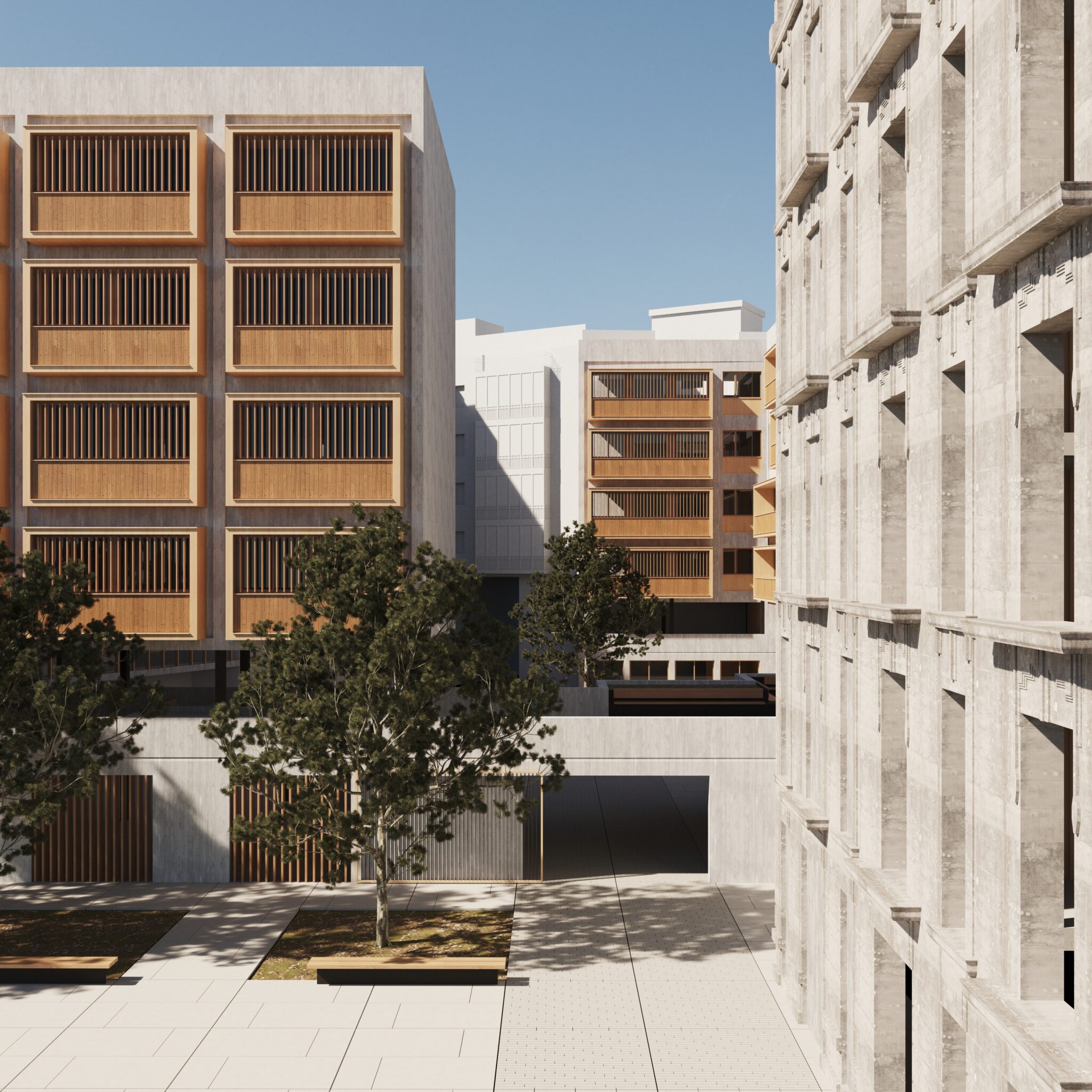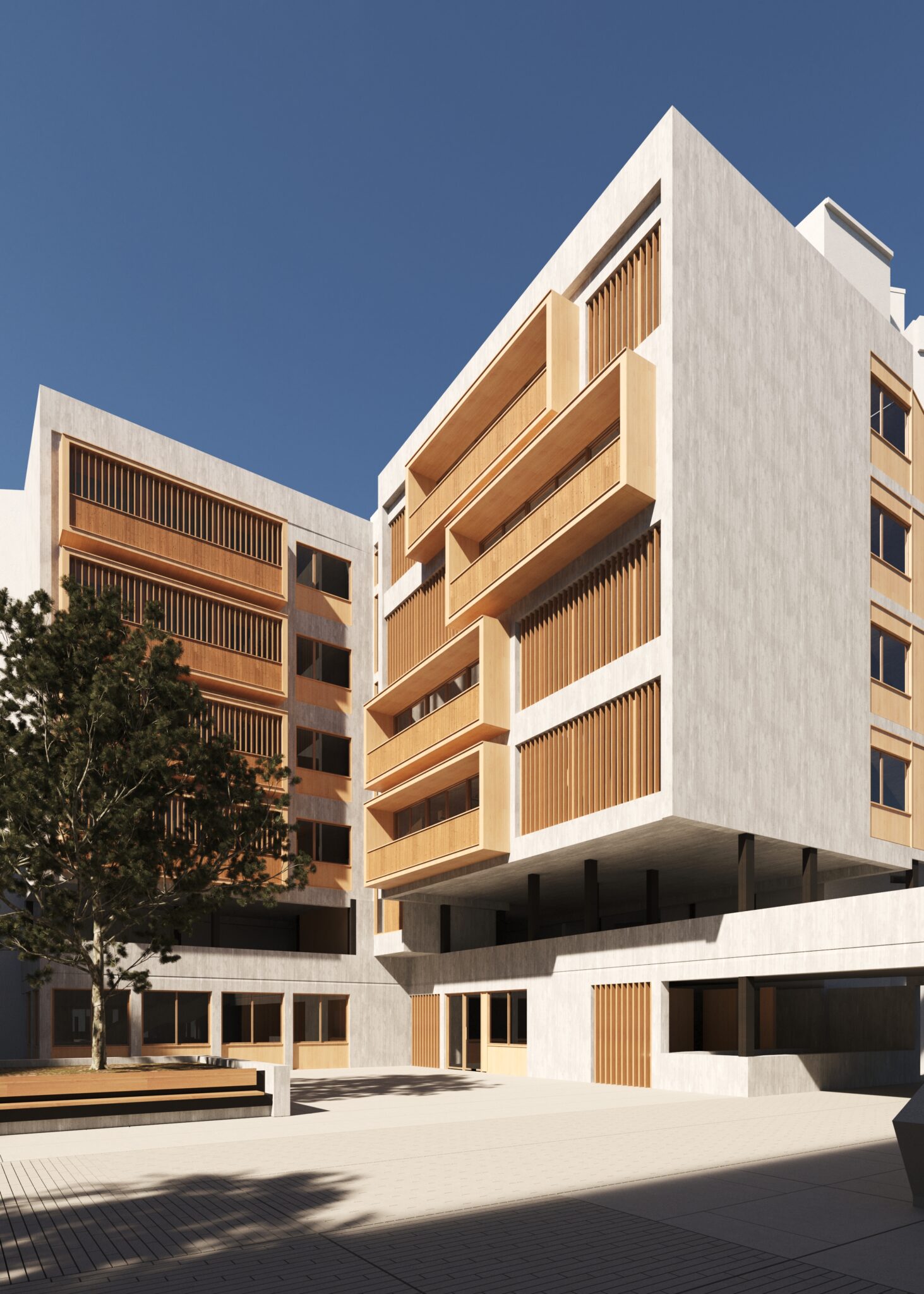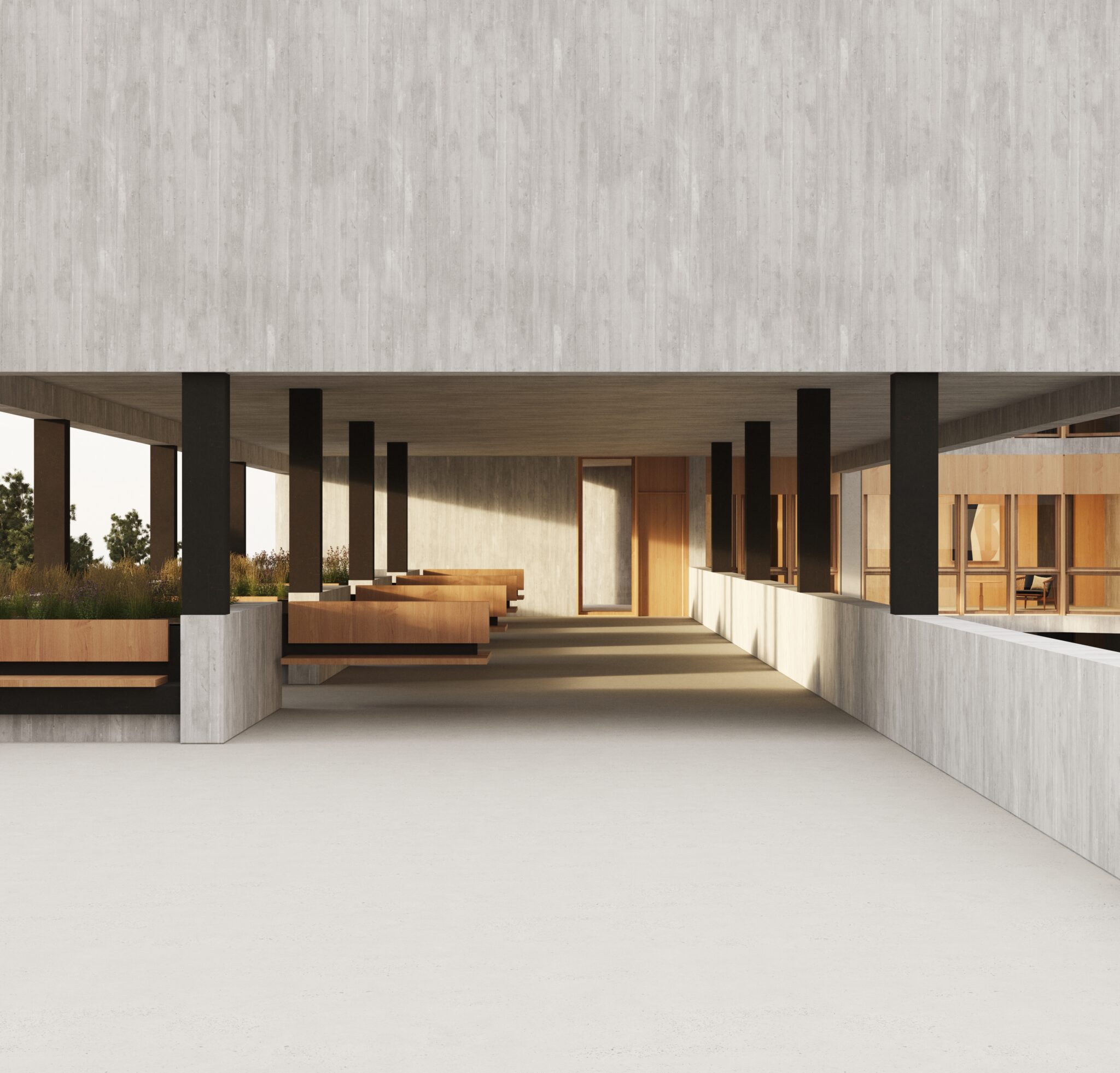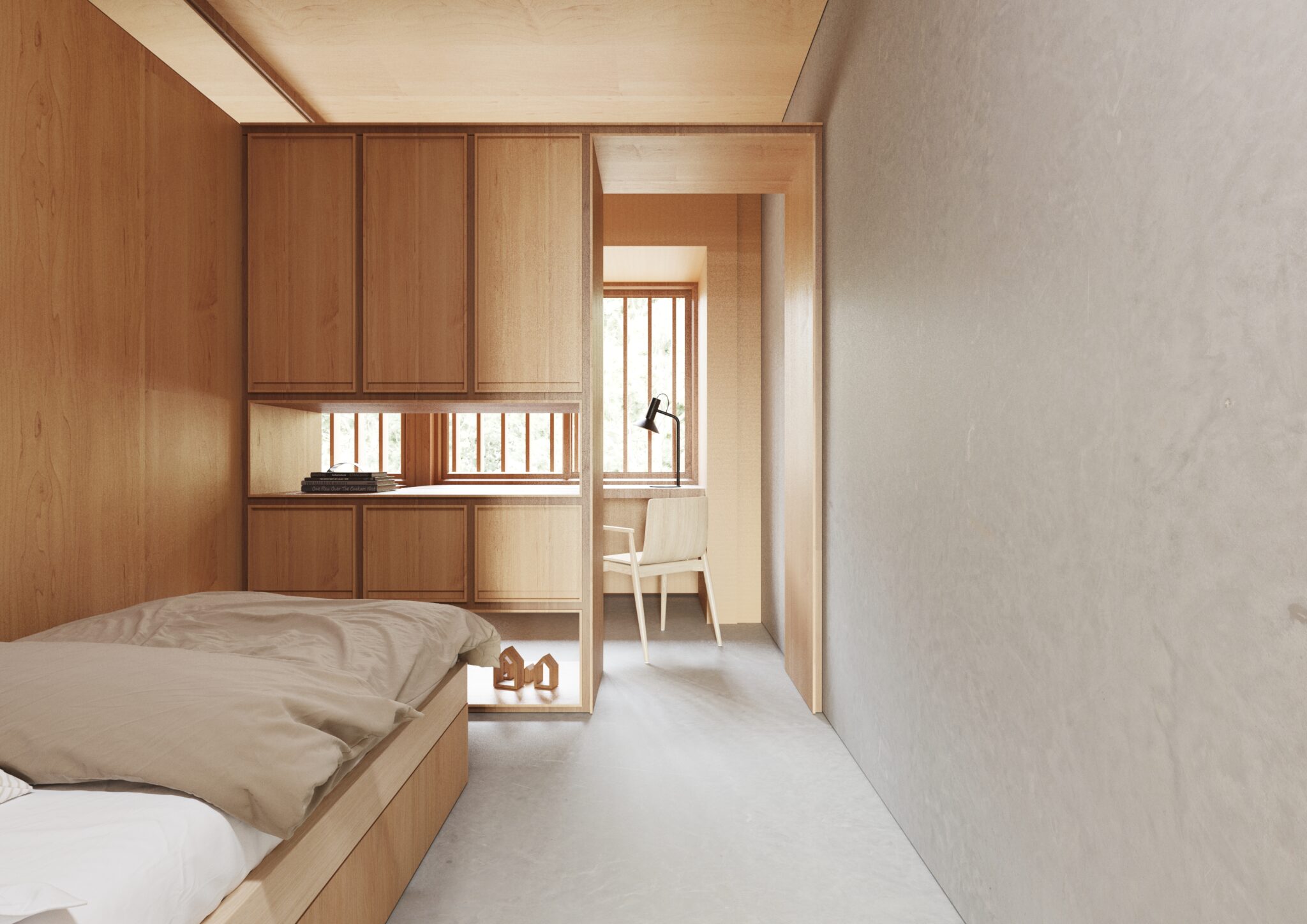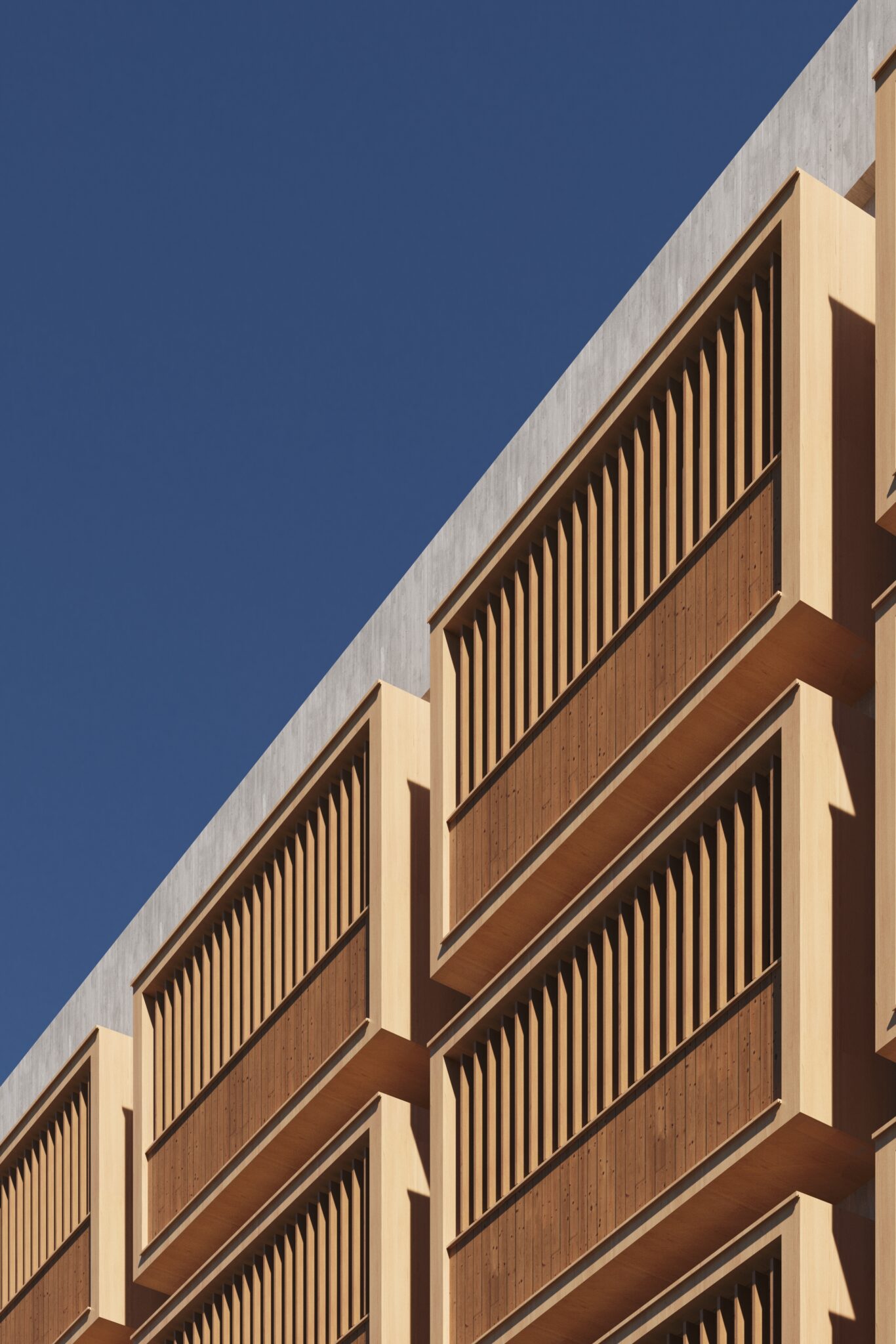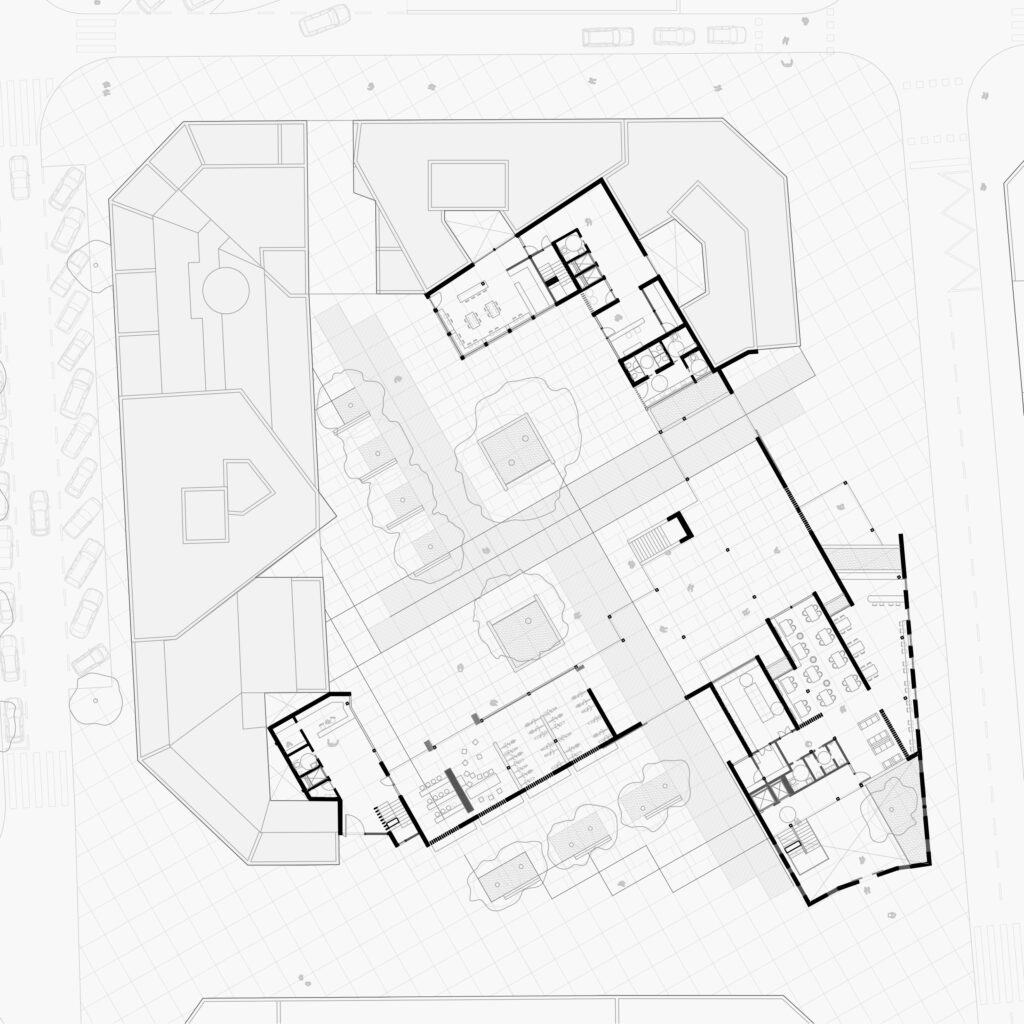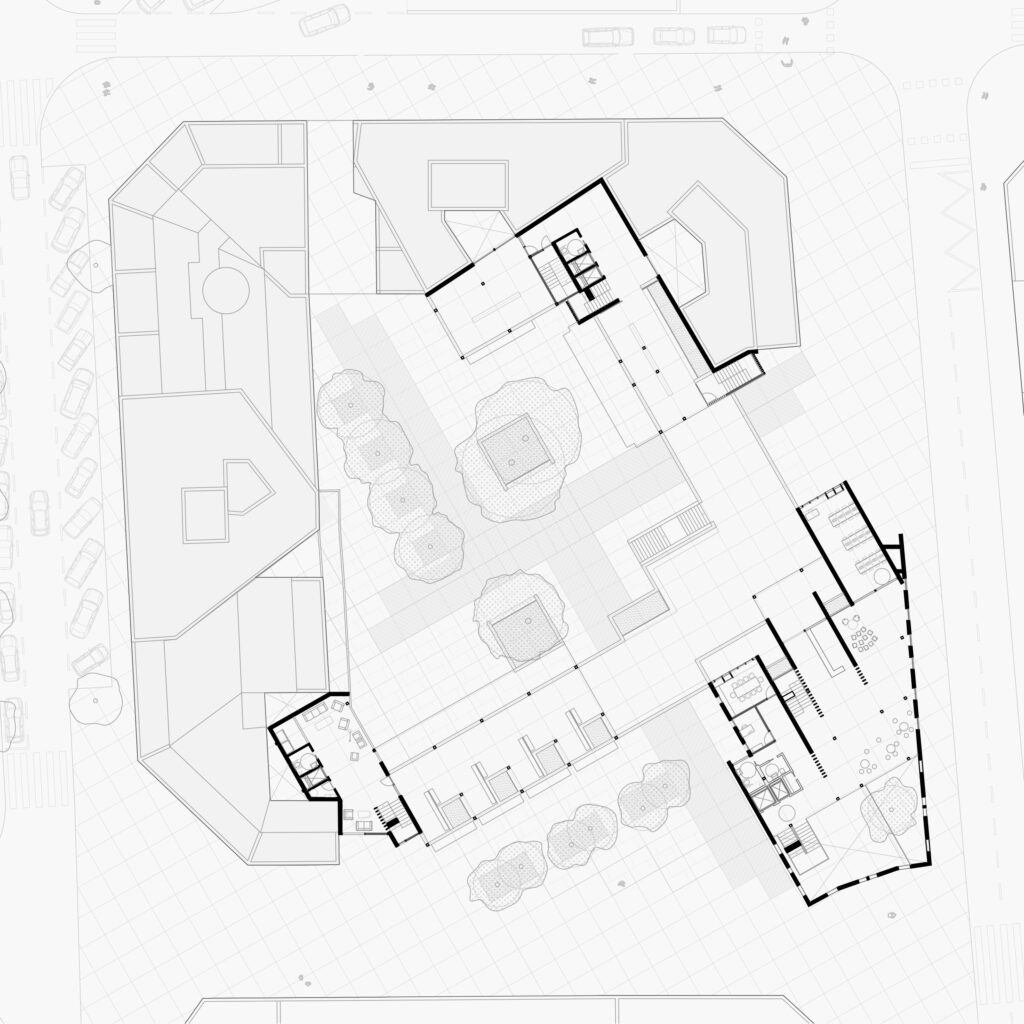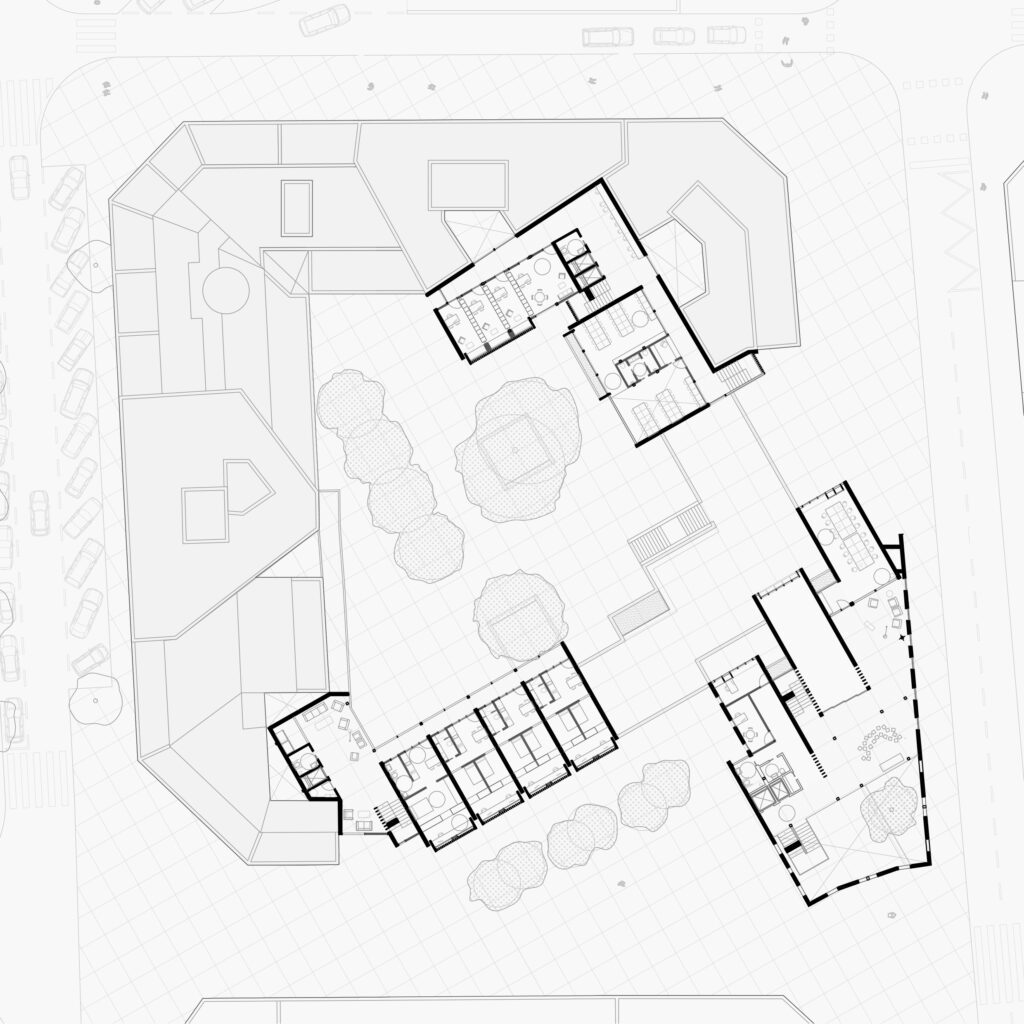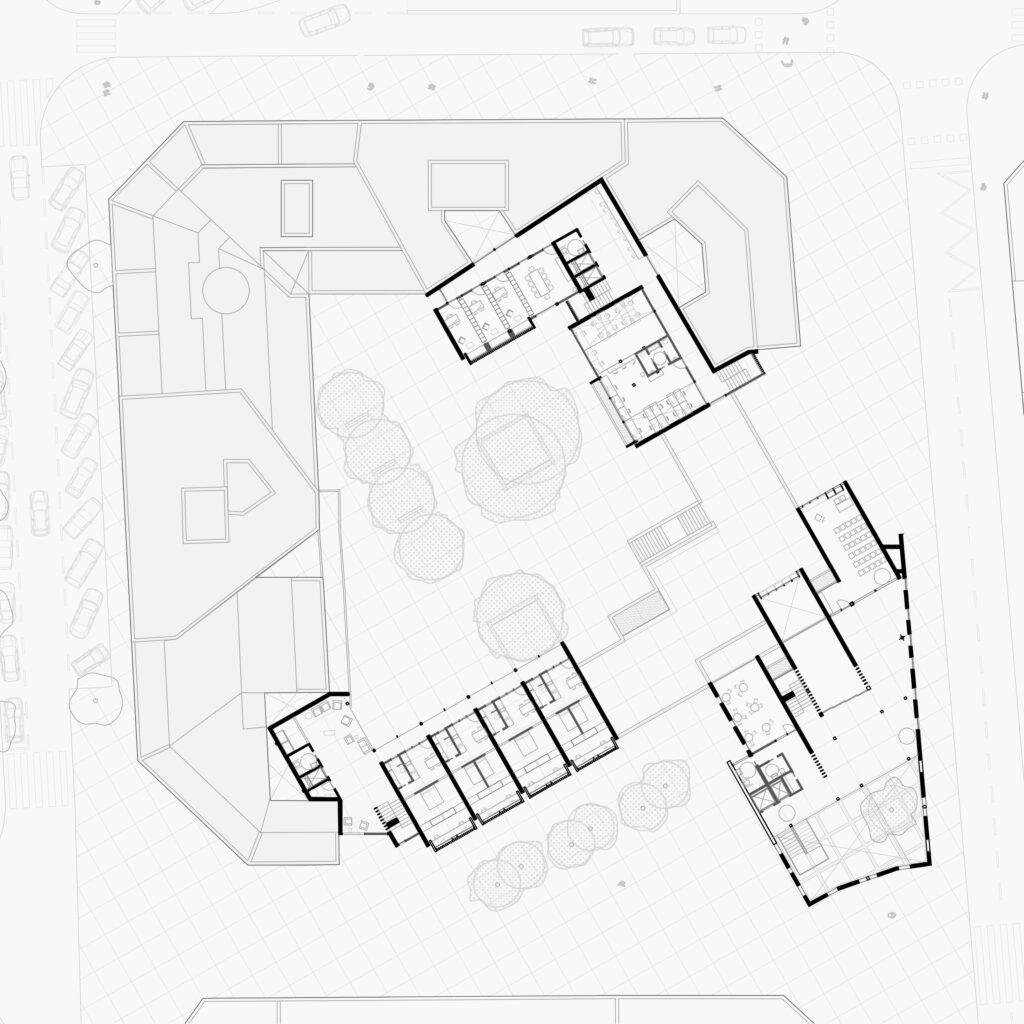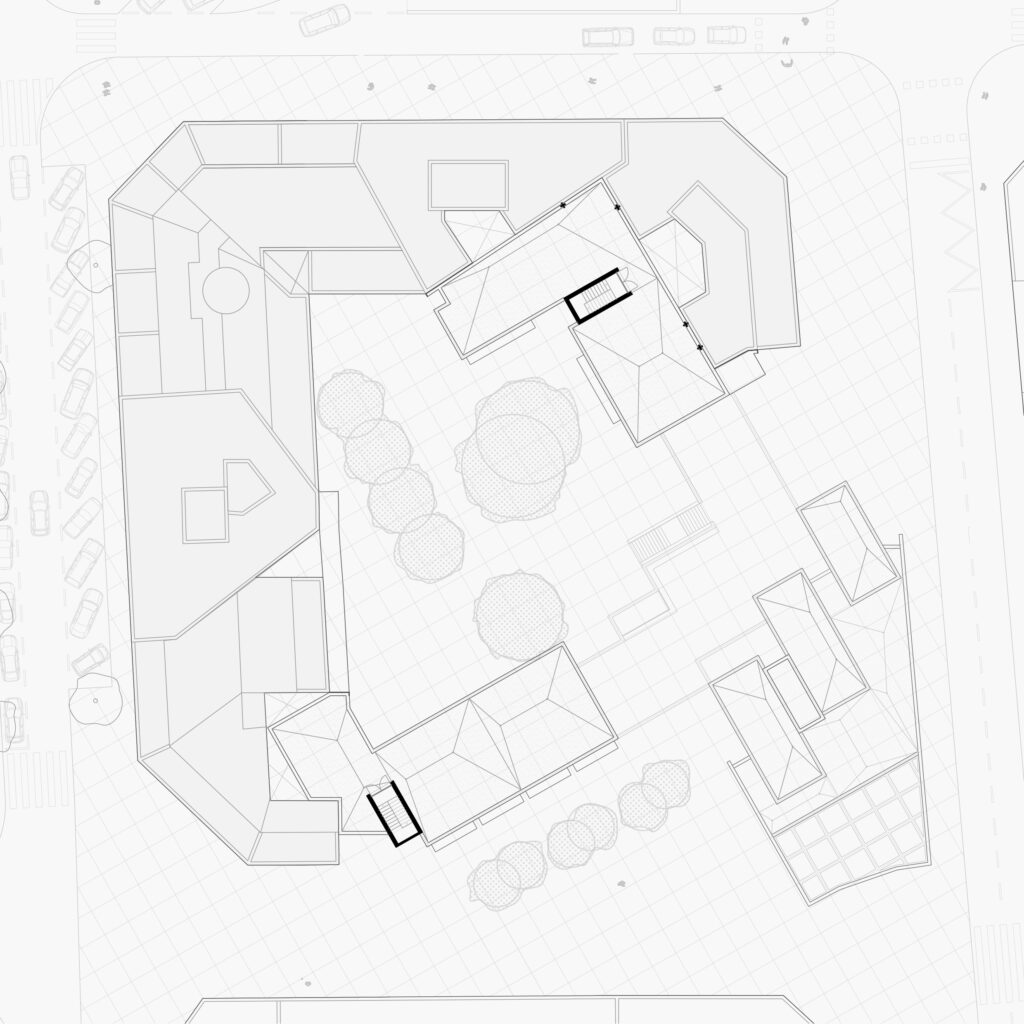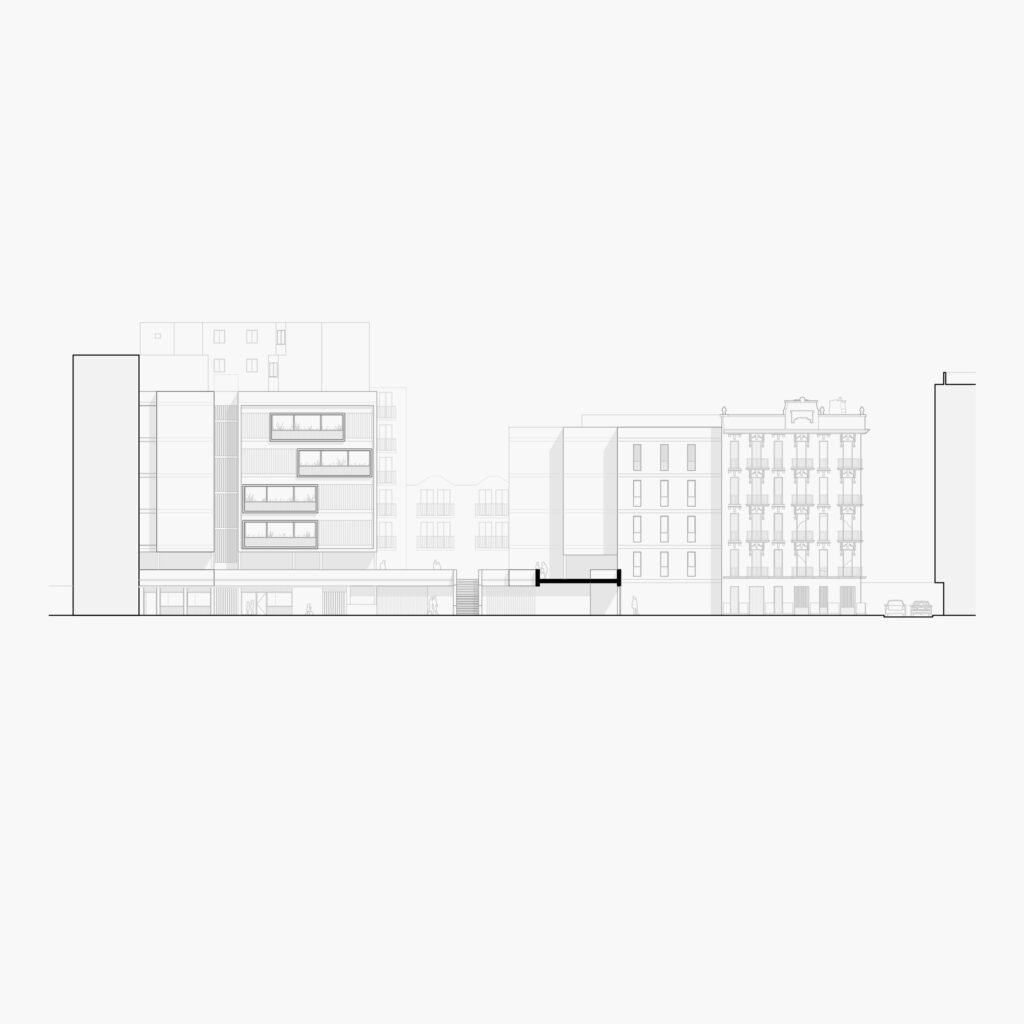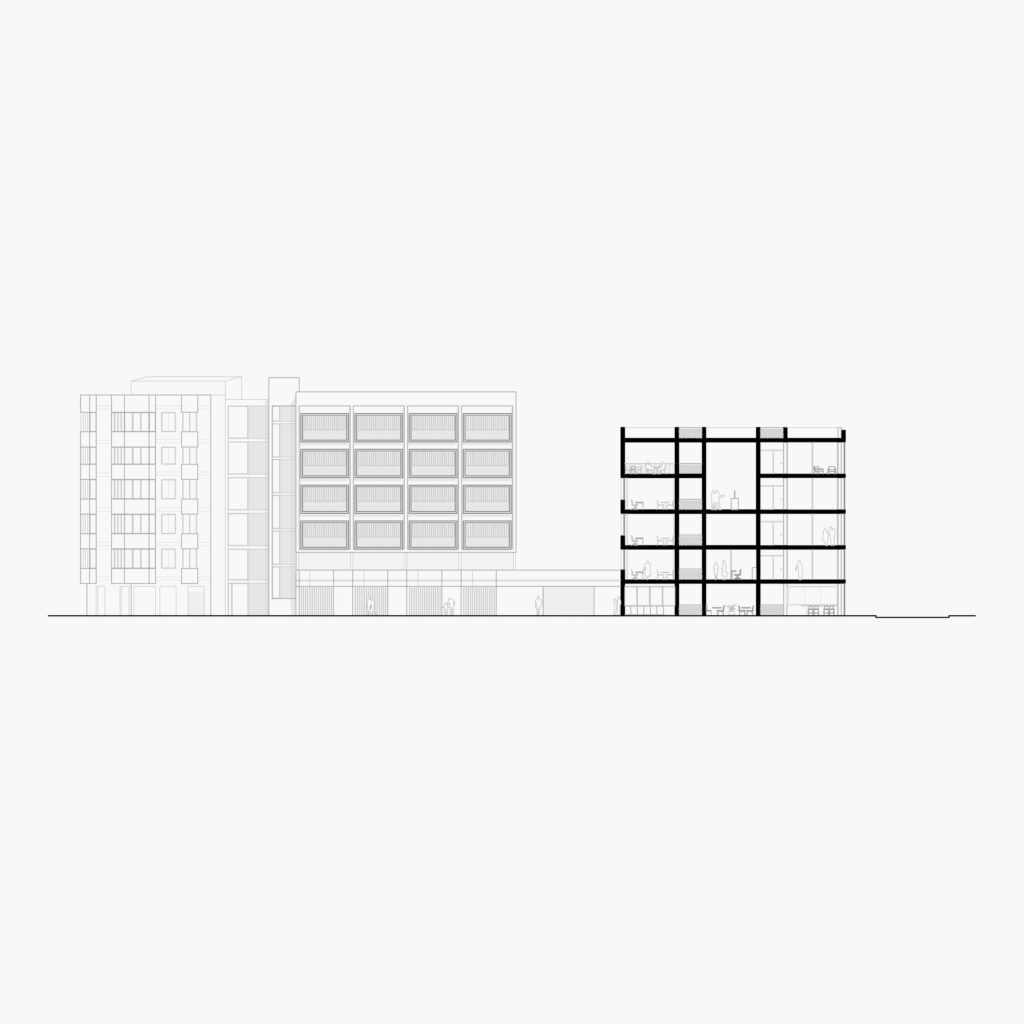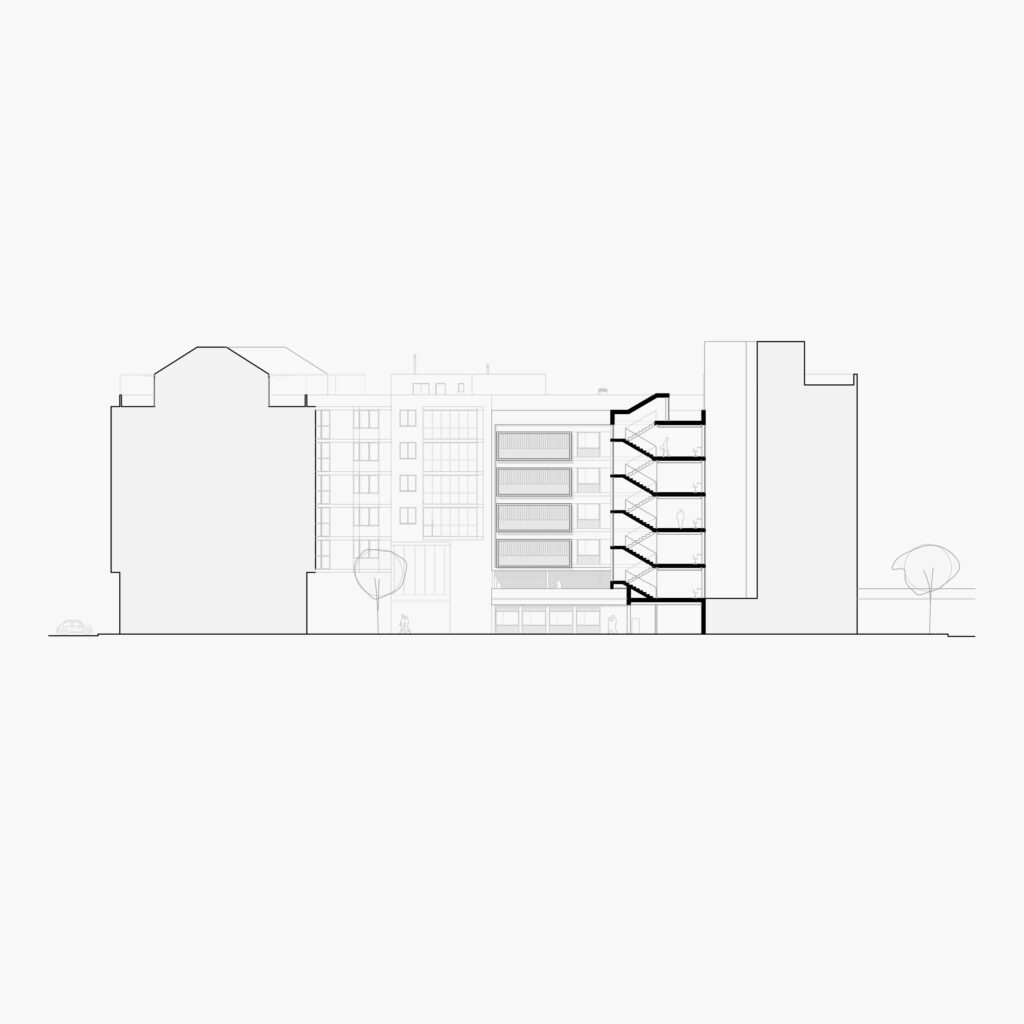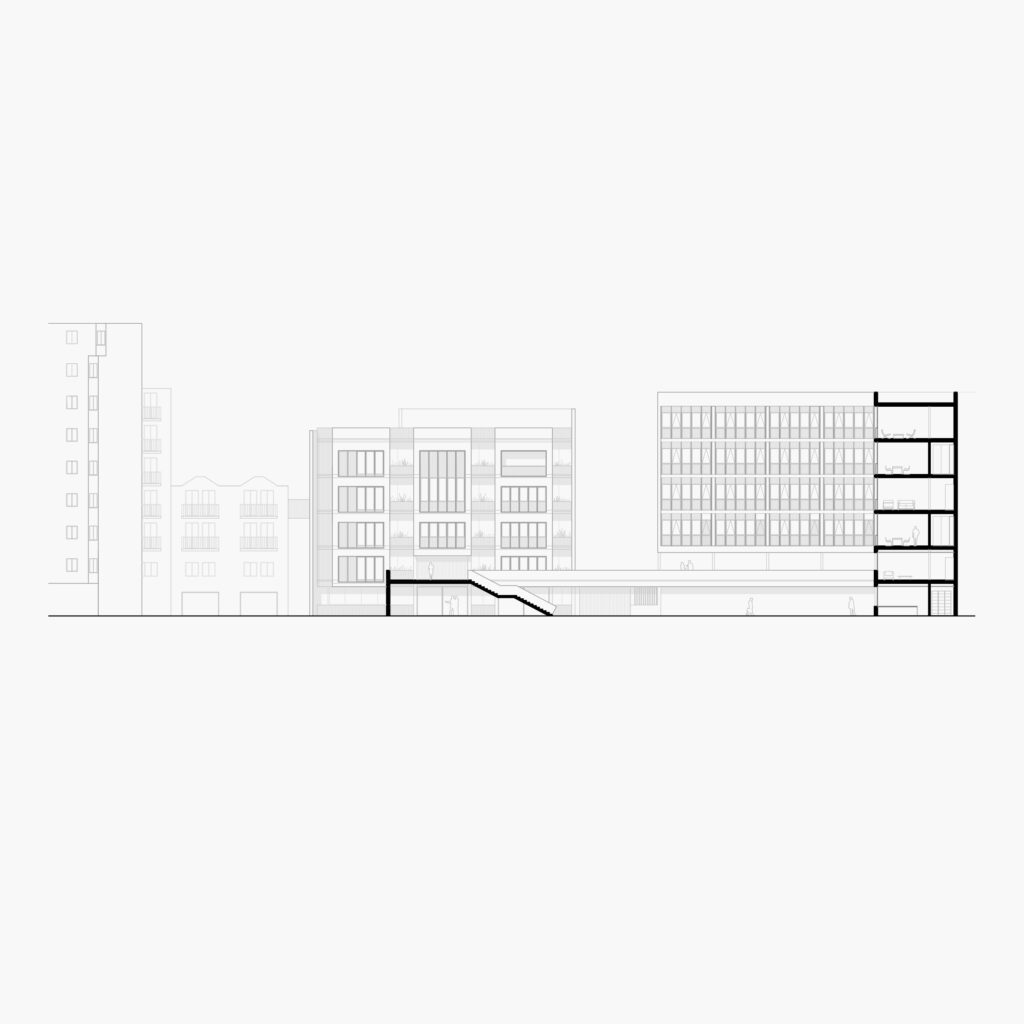Space bank for Ruzafa
Equipment
Designers Álvaro Núñez Mora
Promoter Public | Polytechnic University of Valencia
Location: Ruzafa, Valencia.
Built area: 3.851,62 m²
The neighborhood of Ruzafa, originally an independent municipality until 1811, is situated in the city of Valencia. Following the construction of the Valencia-Grao railway line in 1852 and the bullring in 1860, the decision was made to demolish the city walls in 1865, leading to a new urban development outside the walls and establishing the first expansion (Ensanche) in 1887. Subsequently, a second phase was carried out by Francisco Mora, intertwining the orthogonal grid of the expansion with the pre-existing Arab layout of the Ruzafa neighborhood. Currently, Ruzafa faces serious gentrification issues exacerbated by the increase in nightlife venues, which negatively impact the generational gap in the neighborhood.
The project is located in the current Lost Block, a forgotten block in the heart of Ruzafa that clearly demonstrates the compatibility issues between the two urban grids. It currently serves as an empty lot where garbage accumulates and cars are parked.
From a formal standpoint,the project aims to connect both grids by establishing an orthogonal layout that reinterprets the existing Arab layout and implements order in the composition of the proposal, adapting to the complex volumetric environment of the block. From a functional perspective, the Space Bank for Ruzafa aims to connect different generations of the neighborhood by providing various spaces for relationships and offering key social and educational facilities of Ruzafa, such as the Balmes school, La Saleta day center, or the San Valero Parish, among others.
